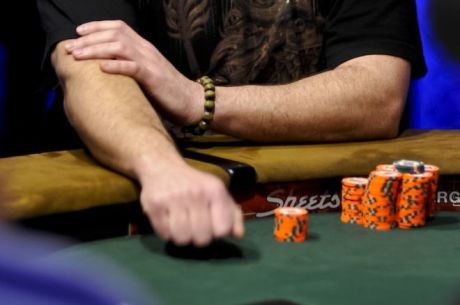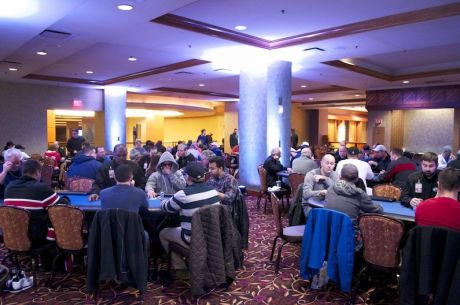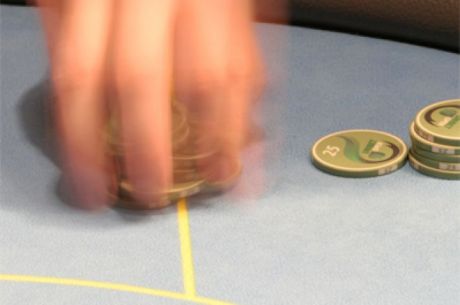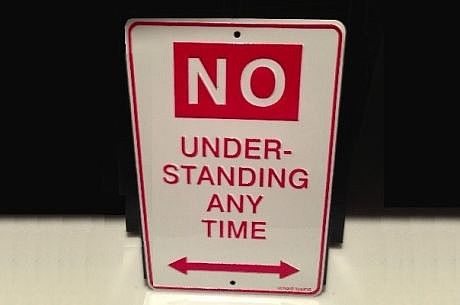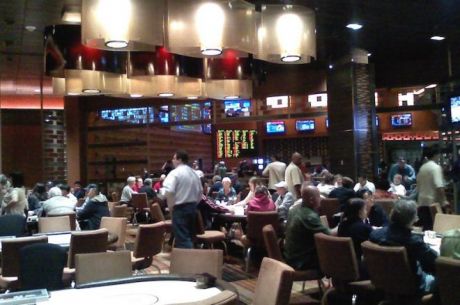Casino Poker for Beginners: Buttons, Buttons, and More Buttons

My previous three “Casino Poker for Beginners” articles were all about poker chips. Now let’s move on to talk about another category of equipment that you will find distinguishes casino poker from both home games and online play: a bunch of buttons.
By “buttons” here, I mean a variety of marked disks that the dealer places on the table to denote events, locations, or game conditions to which the attention of the dealer, the players, and/or other casino personnel needs to be called. How many different buttons are there? I asked my Twitter followers for help in compiling a list, and together we came up with a total of 14 different buttons that you might encounter.
Today we will begin by talking about just one of them — the dealer button. Except where specified otherwise, everything that follows pertains to cash games only.
DEALER
The “dealer” button is the largest and most frequently manipulated button of the bunch, in both tournaments and cash games. In fact, it features so prominently in the game that it is usually just called “the button” — as if there aren’t a dozen other kinds of buttons.
As the name implies, the dealer button designates which player is the nominal dealer. In some home games, it designates the actual dealer as well, but in casino poker it’s kind of an honorary title. You won’t be expected to shuffle and deal the cards, which is a relief — but on the down side, you don’t get to keep the tips, either!
A dealer button is used for all forms of poker in which the opportunity to act last in each round of betting — a distinct strategic advantage — rotates around the table. For all practical purposes, this means we are referring to all variants of poker except the stud games. (In those, the order of play is determined by the players’ “up” cards.)
The dealer moves the button clockwise one position between the end of one hand and the beginning of the next. This process is usually completely straightforward. However, there are complicated rules to cover how it should be moved, or not moved, in all sorts of strange situations, such as when players enter or leave the game, when players change seats between hands, and so on. In such cases, the button may need to stay put for two hands in a row, or move past two or three players at once. If you pay attention, you’ll eventually figure out the patterns that govern those oddball situations, but it’s not something you need to worry too much about. Just trust the dealer.

But as soon as I say to trust the dealer, I also want to add that it’s worth independently keeping track of where the button is. Mistakes in movement of the dealer button are perhaps the single most common form of dealer error, and one of the most common reasons that a game crashes to a halt while it gets sorted out.
Frequently, nobody can remember who had the button and who paid the blinds in the hand that just ended a few seconds before. This might seem incredible at first, but after playing for a couple of hours, the hands of poker blend into each other like mile markers on the freeway — even though you just passed one, you really didn’t notice what it was.
Players often contribute to the dealer’s errors in moving the button themselves. Many players, trying to be helpful, will slide the button one spot to their left at the end of the hand. However, if the dealer’s attention is elsewhere when this happens, a few seconds later he or she will move the button again, and suddenly there’s a problem that has to get sorted out.

For the most part, it’s best to leave the button alone and just let the dealer push it as needed. Of course, if it’s a large table and/or you have a dealer who has difficulty reaching the button, especially when it’s at the end of the table, by all means go ahead and move it on to the next player. But before you do, wait until the dealer is indicating that it’s time, or when you do move it make a clear verbal announcement (“Button moved”) and make sure you get an acknowledgment, so that you avoid having it moved twice.
Players depend on being able to see the button in order to know the order of action. After a while, it becomes completely habitual to scan the table for the button, then scan clockwise from there until you find the first player with live cards, in order to know who is going to act first on each round of betting. This important function of the button is disrupted if it is not left in an easily visible position on the table.
Why would it not be? Unfortunately, some players think they’re entitled to treat the dealer button as their own personal toy to play with while it’s in front of them. They’ll try to get it to stand on edge, roll it around, make it spin like a top, scoot it from one hand to another like a hockey puck, put chips they’re betting on top of it, or pull it in close to them and use it as a card protector.
Such antics prevent other players from using the button as a visual marker of where the action is to begin. These little games are inconsiderate of the other players. They slow down the action, and cause people to play out of turn. So please raise your right hand and repeat after me: “The button is not a toy, and I will not treat it as such.”
In the next article, we’ll move on to some of the other buttons that get used in casino poker games.
Robert Woolley lives in Asheville, NC. He spent several years in Las Vegas and chronicled his life in poker on the “Poker Grump” blog.
Get all the latest PokerNews updates on your social media outlets. Follow us on Twitter and find us on both Facebook and Google+!





